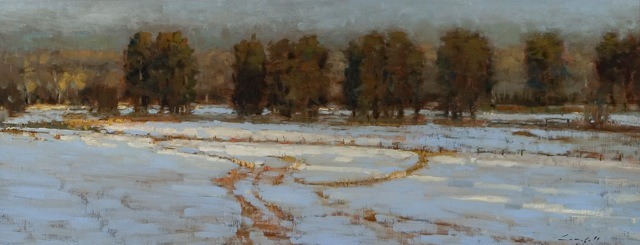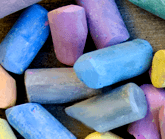A CASE AGAINST ODORLESS MINERAL SPIRITS
This is a guest article written by Peter Campbell, the highly regarded artist, workshop presenter, and video producer whose work appears in multiple galleries from Colorado to the East Coast…

Anyone who has taken one of my workshops has heard my feelings about Odorless Mineral Spirits or OMS. I have long touted the advantages of using pure gum turpentine in small quantities versus OMS for a couple of reasons.
The first reason is a matter of exposure. I can’t tell you how many times I have seen artists use OMS to thin the paint as a wash for the initial block-in or a background. Spreading a thin wash of OMS over the canvas creates a large surface of quickly evaporating OMS that the artist subsequently breathes throughout the entire painting session. Because the odor has been removed the artist is completely unaware of the massive exposure they are subjecting themselves to as well as those around them. Odorless is not vapor-less. At least with turps if you used that much in a painting session the odor would alert you that you are getting far too much exposure. With OMS there is no canary in the coal mine so to speak.
The second is that OMS has a tendency to destroy the oil vehicle that binds the pigment. When painting wet into wet the first thin layer painted with OMS has such a strong ability to break down the succeeding layers that it makes it almost impossible to get the paint to adhere encouraging the layers to mix which in turn leads to the oil painters dread…. mud. This tendency to breakdown the oil is so strong that I firmly believe it creates a weak paint layer. It also dries with a matt chalky finish that is annoyingly absorbent. Whereas gum turpentine has a gum like residue that helps bind layers and gets tacky as it dries giving the artist a chance to make dry brush stokes on previous layers. You also can’t use OMS to make a Damar varnish or clean up a varnishing brush.
The final reason is a personal one. I get a massive headache within ten minutes of exposure to OMS. Several of my weekly group portrait session have forced me to leave early due to someone using OMS.
So what to do? Turpentine’s toxicity is as bad as OMS but at least you can limit your exposure by using it sparingly. For years that has been my practice with a small cup of 50/50 linseed/turps as a medium. But now with Oil of Spike Lavender I have found the perfect solution. I substitute it for everything I would use Turps for, only I use less. Because Oil of Spike Lavender is a bit stronger in its solvent properties it requires a little less. A 30/70 ratio of Oil of Spike Lavender to Linseed Oil works for direct painting. For layers I start 50/50 then go to 30/70 to keep fat over lean. Oil of Spike Lavender has very low toxicity and still gives that gum like feel to the paint. It has a pleasant odor that is welcoming when I walk into the studio.
I must also tout the properties of the Art Treehouse’s Artist’s Solvent. I have used it for an initial wash block-on for large paintings letting it dry overnight. For this it works great though the drying time may be a bit longer if you use something other than quicker drying earth colors. I also use it for clean-up. It can even clean dried paint off my palette and with no toxicity.
Oil paint has always been my preferred medium. In the past I have always grudgingly accepted the health risks associated with my profession. I now feel I can work with much less worry and absolutely no sacrifice in methodology or results.




